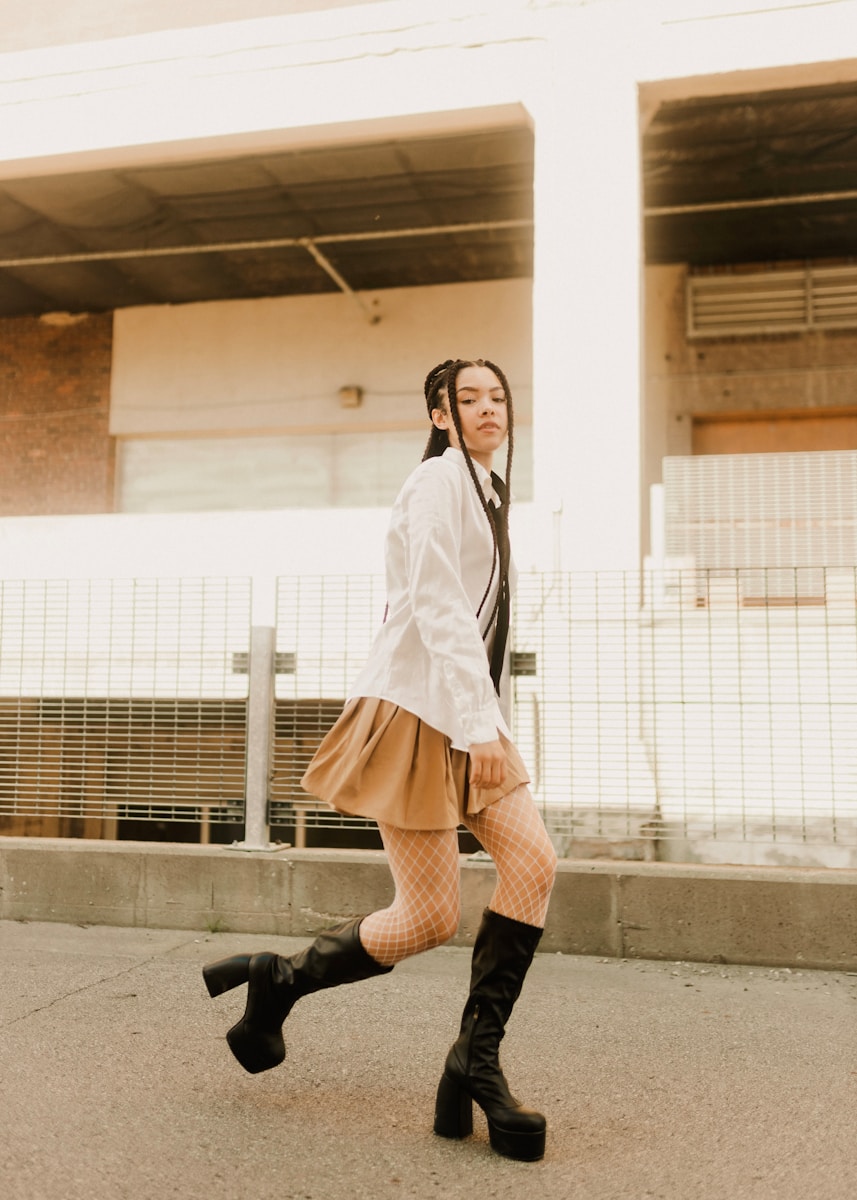Fashion is never just about what we see. The shimmer of silk, the heft of velvet, the buttery softness of cashmere—these qualities reach beyond sight and settle into the senses. Luxe fabrics hold a magnetic power that is felt as much as it is observed. They shape how garments move, how they catch the light, and ultimately how we, the wearers, inhabit them. Behind every tailored suit or flowing gown is the silent voice of fabric whispering luxury, comfort, and identity.
This essay explores why fabrics with sumptuous textures continue to captivate, tracing their cultural history, psychological impact, and practical place in modern wardrobes. It also unpacks how to integrate luxe fabrics into everyday life without losing their sense of occasion.
The Timeless Appeal of Touch
The human relationship with fabric began as necessity. Early civilizations sought warmth and protection from the elements, weaving fibers into crude coverings. Yet even then, hierarchy played a role: Egyptian royalty draped themselves in fine linen, while commoners wore coarser weaves. Touch became a signal of privilege, a tactile marker of status.
Fast forward centuries and that allure remains. To stroke velvet is to encounter a lush density that signals opulence. To brush against silk is to feel fluid elegance that has no rival. These sensations aren’t arbitrary; neuroscientists note that touch directly influences emotions. Softness is associated with safety and intimacy, while heavier, denser textures evoke security and permanence. Luxe fabrics succeed because they marry sensory pleasure with symbolic meaning.
Fabric as Storytelling
Clothing communicates, and fabric is the alphabet. A velvet blazer says something different from a crisp cotton one. Satin tells a story of evening sophistication, while raw silk whispers artisanal authenticity. These tactile narratives add depth to personal style.
Consider historical context:
Velvet in the Renaissance was reserved for nobility and clergy, its rarity reinforcing power structures.
Silk in Imperial China was so valuable that its production and export were closely guarded secrets.
Wool in Europe symbolized both trade and survival, forming the backbone of economies and wardrobes alike.
Today, while these fabrics are more accessible, their historical resonance lingers. When we slip into a velvet gown or wrap ourselves in cashmere, we are engaging in a conversation that stretches across centuries.
Texture as Visual Drama
The allure of luxe fabrics is not limited to touch—they also manipulate light and form in ways ordinary textiles cannot.
Silk and Satin: Their sheen captures and reflects light, creating movement even when the body is still. This makes them a favorite for evening wear and red-carpet glamour.
Velvet: Its pile absorbs light, giving it a depth that appears almost three-dimensional. The result is richness that photographs beautifully and feels indulgent.
Cashmere and Mohair: These create a halo effect, a soft blur at the edges that communicates warmth and gentleness.
Theatricality and texture go hand in hand. Luxe fabrics transform the wearer into a focal point, which is precisely why they are chosen for special occasions.
The Psychology of Luxury
Luxury is as much about perception as it is about reality. Why does slipping into silk pajamas feel more indulgent than cotton, even if both serve the same function? The answer lies in association.
Luxury fabrics signal rarity: cashmere requires delicate fibers combed from undercoats of goats; genuine silk depends on the labor-intensive cultivation of silkworms. The scarcity of these resources, combined with the craftsmanship required, attaches symbolic weight to the fabric. Wearing them feels like participation in an exclusive experience, even if only privately at home.
Moreover, luxe fabrics play into emotional states. A satin dress may inspire confidence and sensuality; a cashmere sweater, comfort and security. Texture is more than surface—it is psychological architecture for mood.
Challenges of Luxe Fabrics
While alluring, luxury fabrics also demand respect. Their care requirements and fragility distinguish them from mass-market textiles.
Silk: Prone to water spotting and sun damage.
Velvet: Easily crushed, requiring careful storage.
Cashmere: Susceptible to pilling if over-worn.
These vulnerabilities remind us that luxury is tied to responsibility. Part of the mystique of these fabrics is their demand for gentler handling, which reinforces their aura of rarity.
Modern Designers and Luxe Innovation
Contemporary fashion continues to reinvent how luxe fabrics are used. Designers blend traditional textiles with modern silhouettes, making them relevant beyond formal contexts.
Minimalist Cashmere: Once confined to winter luxury, cashmere is now spun into lightweight knits for year-round wear.
Velvet Streetwear: Once reserved for evening gowns, velvet sneakers and track jackets fuse casual with decadent.
Tech-Silk Hybrids: Innovations mix silk with synthetics to improve durability while retaining sheen, expanding its versatility.
These reinventions democratize luxury while keeping its sensory essence intact.
Everyday Luxury: Bringing Fabrics into Real Life
For most, luxe fabrics are associated with rare occasions. But integrating them into daily wear is easier than it seems.
Cashmere Accessories: Scarves and gloves offer a touch of luxury without overwhelming an outfit.
Silk Blouses: Pairing with denim balances refinement and casual ease.
Velvet Footwear: Shoes or boots add a subtle statement without requiring a full velvet ensemble.
Small doses of luxury transform everyday experiences, making mundane routines feel elevated. Think of silk pillowcases improving sleep quality or cashmere throws softening a living room sofa—touch once again becomes daily delight.
Cultural Dimensions of Fabric Desire
Different cultures interpret luxury fabrics uniquely. In Japan, silk kimonos are ceremonial treasures, passed down as heirlooms. In India, silk saris are wedding staples, embroidered with metallic threads that amplify their status. In the Middle East, fine wools and velvets adorn interiors as much as wardrobes, linking fabric to hospitality and community identity.
Globalization has blended these traditions. Luxe fabrics now circulate widely, but their local meanings remain embedded, adding richness to how they are worn and understood.
Sustainability and the Future of Luxury
The rise of sustainability challenges traditional notions of luxury fabrics. Cashmere production, for instance, has strained ecosystems in Mongolia, while silk farming raises ethical questions about animal welfare. This tension has led to innovations:
Peace Silk: Harvested without harming silkworms.
Recycled Cashmere: Made from repurposed fibers to reduce waste.
Plant-Based Alternatives: Fabrics derived from bamboo or eucalyptus mimic silk’s drape while offering ecological advantages.
True luxury in the modern age may increasingly be defined not only by touch but by conscience. The allure of luxe fabrics evolves when craftsmanship aligns with sustainability.
Practical Tips for Wearing Luxe Fabrics Like a Pro
Mix Textures: Pair silk with denim or velvet with cotton to prevent looks from feeling costume-like.
Choose Accessories First: If intimidated, start small—a silk scarf or velvet clutch.
Mind the Season: Cashmere sings in winter, while lightweight silks breathe best in warmer months.
Invest in Care: Use proper storage, gentle detergents, and professional cleaning where necessary.
Let Fabric Lead: When working with luxurious textiles, keep silhouettes simple. The fabric itself is already making a statement.
Why Luxe Fabrics Endure
Fashion cycles through trends, yet luxe fabrics persist because they connect us to something primal: the need for touch, the desire for beauty, the thrill of rarity. They bridge the sensory and the symbolic, allowing us to both feel and project luxury simultaneously. Whether in a velvet jacket, a silk slip dress, or a cashmere sweater, these textiles remind us that fashion is not only about looking good but about experiencing the world more richly through the senses.



